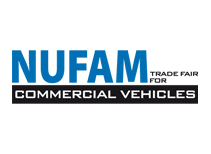Digitalisation in the transport industry: further than you think
Digitisation alone could reduce annual CO2 emissions in Germany by up to 80 million tonnes by 2030. The transport sector would contribute up to 9.3 million tonnes of CO2 to this result.
Digital technologies can play a significant role in helping Germany to meet its climate targets. This is the conclusion of the study ‘Climate Effects of Digitalisation 2.0’, published by the Bitkom association.
The Bitkom study sees particular potential in a digital transport network and digital traffic optimisation. Sensors on the road or GPS systems in cars could provide real-time data that can be used to switch traffic lights or redirect traffic flows. Smart logistics that avoid empty runs for trucks and optimise freight routes are also an important factor. Corresponding solutions will also be on display at the upcoming NUFAM in Karlsruhe.
Telematics offers many advantages
- Telematics plays a central role here. Most fleet operators already use modern telematics systems to control their fleets more efficiently. Depending on the respective solution, this offers a range of advantages:
- Real-time localisation: With this basic telematics function, companies always know where their vehicles are.
- Quality monitoring: Freight conditions, in particular the temperature of sensitive goods, can be seamlessly documented.
- Optimised route planning based on current traffic data: Fuel consumption and driving times can be reduced.
- Driver monitoring: Driving and rest periods are automatically recorded to better comply with legal requirements.
- Driver training: Telematics helps to optimise driving behaviour based on recorded telemetry data, thus minimising consumption and wear.
- Predictive maintenance: Sensors report defects early, before costly breakdowns occur.
- Transparency: IoT sensors and GPS tracking now make it possible to trace supply chains almost seamlessly.
Other drivers of digitalisation are digital platforms and cloud technology. Digital platforms enable direct data exchange between suppliers, freight forwarders, warehouses and customers. Platforms such as Timocom, Transporeon or Uber Freight connect freight providers with freight forwarders, reducing the number of empty runs. Classic digital freight exchanges also promote a more efficient use of existing transport capacities. Cloud solutions mean that all parties involved in the supply chain have simultaneous access to the same data and work in sync, allowing bottlenecks to be identified early on.
Much more transparent
Conclusion: digitalisation is already making the transport and logistics industry much more transparent, faster and more cost-efficient. Stronger networking is increasingly automating processes, leading to better capacity utilisation, lower costs and more sustainable logistics.

